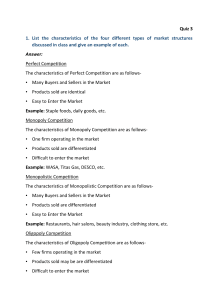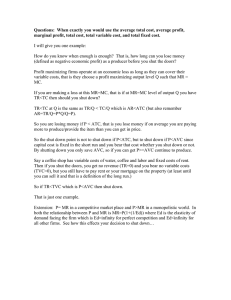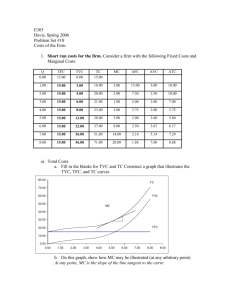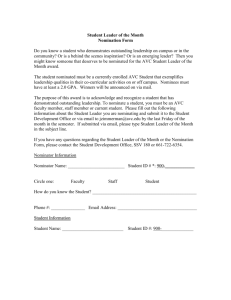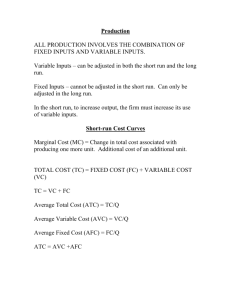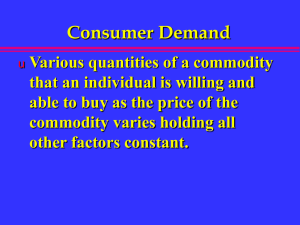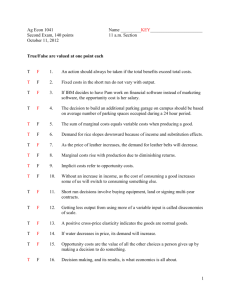File - Zhiyu Wang (Beverly)
advertisement
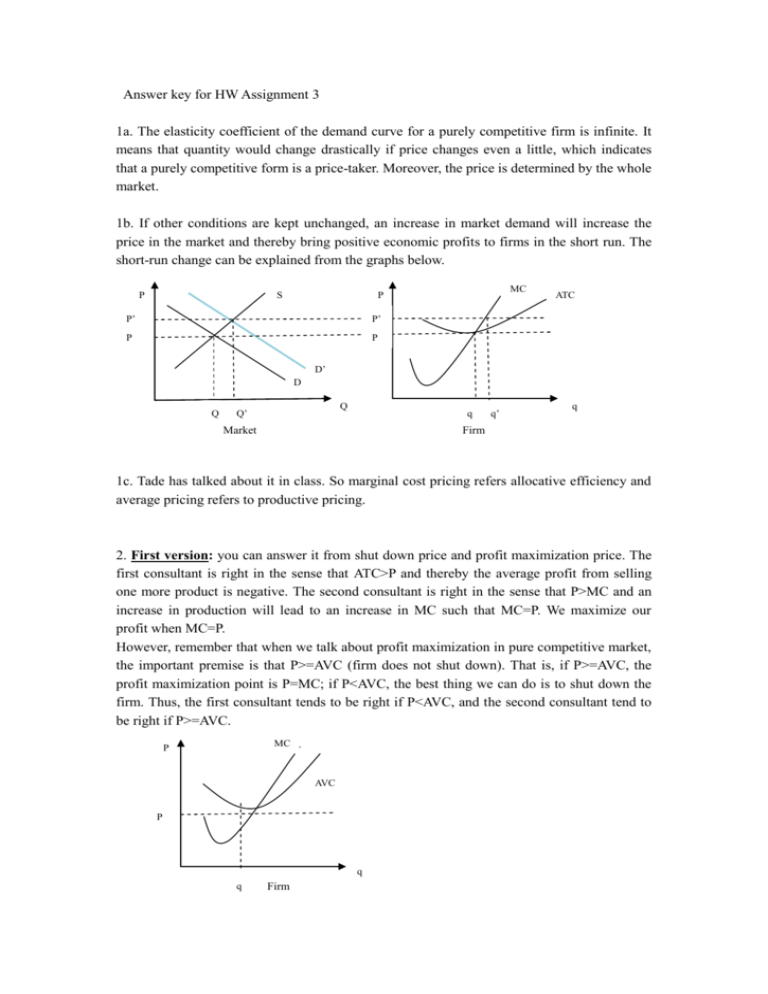
Answer key for HW Assignment 3 1a. The elasticity coefficient of the demand curve for a purely competitive firm is infinite. It means that quantity would change drastically if price changes even a little, which indicates that a purely competitive form is a price-taker. Moreover, the price is determined by the whole market. 1b. If other conditions are kept unchanged, an increase in market demand will increase the price in the market and thereby bring positive economic profits to firms in the short run. The short-run change can be explained from the graphs below. P S MC P P’ P’ P P ATC D’ D Q Q Q’ q Market q’ q Firm 1c. Tade has talked about it in class. So marginal cost pricing refers allocative efficiency and average pricing refers to productive pricing. 2. First version: you can answer it from shut down price and profit maximization price. The first consultant is right in the sense that ATC>P and thereby the average profit from selling one more product is negative. The second consultant is right in the sense that P>MC and an increase in production will lead to an increase in MC such that MC=P. We maximize our profit when MC=P. However, remember that when we talk about profit maximization in pure competitive market, the important premise is that P>=AVC (firm does not shut down). That is, if P>=AVC, the profit maximization point is P=MC; if P<AVC, the best thing we can do is to shut down the firm. Thus, the first consultant tends to be right if P<AVC, and the second consultant tend to be right if P>=AVC. MC P AVC P q q Firm Second version: you can answer it from the characteristics of MC and ATC. The first consultant is right in the sense that the current production locates some point larger than q2. The second consultant is right in the sense that the current production locates some point less than q1. ATC q1 Firm q2 q 3a. The profit we talk about in our daily life refers to accounting profit, and the profit we talk about in economics is economic profit. Accounting profit is no less than economic profit, therefore it could be positive when economic profit is zero. 3b. Whether to shut down a firm depends on whether the firm can sustain itself, i.e. P>=AVCmin. Whether to exit a industry depends on whether it can make a profit, i.e. whether economic profit is negative or not when P=MC. 4a. Yes, his accounting profit increases by $2000. Accounting profit=total revenue-explicit cost. Here $2000 moves from explicit cost to implicit cost when the studio is given to John. 4b. No, his economic profit doesn’t change. Economic profit=total revenue-explicit cost-implicit cost. 5. You can use the example which Tade presented in the lecture. In the long run of pure competitive market, AR=MR= P=MC=ATC. Please feel free to let me know if you have any concerns in the answers.
